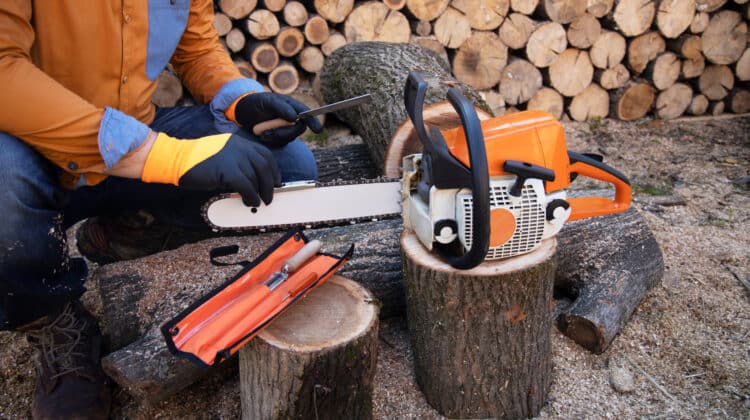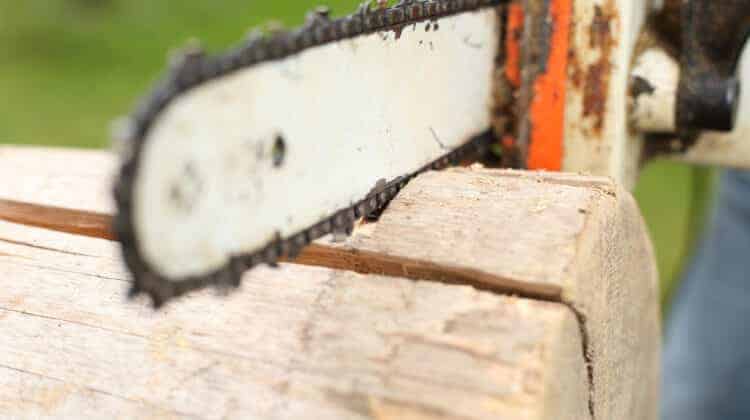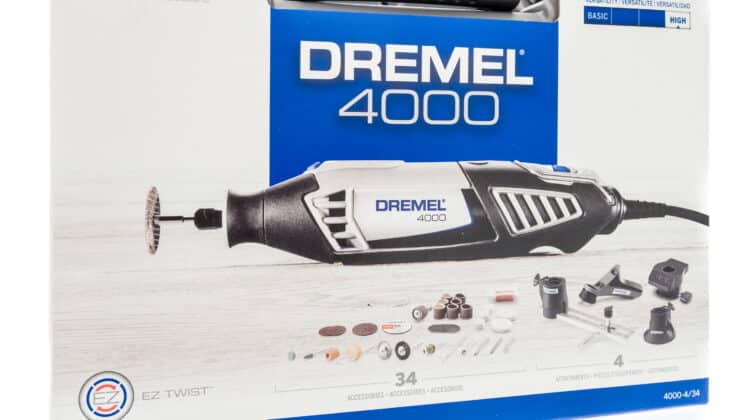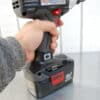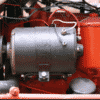
When you own a chainsaw, sharpening both the chain and blade are among the most fundamental and valuable skills you will ever have. While pointing it out is an excellent option, learning how to sharpen it yourself may save you enough money and time. Figuring out how to sharpen a chainsaw with a Dremel isn’t as hard as you may think.
The process of chainsaw sharpening, on the other hand, is not quite as essential as other tasks such as tightening a chainsaw chain. This tutorial will make the procedure as simple as possible.
After inspecting it thoroughly, you should understand why and when you should sharpen the chain and blade, as well as what equipment you’ll need. Also, sharpening the various components.
With the introduction of contemporary technology, many have begun to consider traditional manual equipment, such as axes, which were once used for wood cutting, to be obsolete. Because high-powered chainsaws are less expensive than conventional equipment.
It will not stain or collect dirt. It is more cost-effective to utilize high-powered chainsaws.
Table of Contents
Why Should I Sharpen My Chain & Blade?
Even the most beginner-friendly kinds of chainsaws are mighty machines. Every day, they are subjected to tremendous friction and constant pressure. It should come as no surprise that your chain will get dull and will require sharpening at some point.
Whether your instrument is a gas-powered chainsaw or an electric chainsaw, this will need regular maintenance. This includes sharpening to function correctly.
With the first cut, the chainsaw produces sawdust instead of fine chips, indicating working. While cutting, another thing you observe is having to use more pressure than usual. Even though the machine is adequately lubricated, there may be smoke when operating.
If you detect any of these indicators, you should consider getting your blades sharpened as soon as possible. Due to the inefficiency of dull chainsaw chainsaws and edges, the fuel consumption will be higher than with a sharpened chainsaw blade and chain.
This increases kickbacks, which may be pretty risky for the person using them.
What To Do Before Sharpening?
Clean the tool’s blade entirely before you begin sharpening it to ensure that no dirt or oil is left on it. If you leave any dirt on your blade when pointing, it will degrade the blade quality and reduce its lifespan.
Any remaining chain oil and bar will cause a buildup of lubricant on the file, which causes rendering inoperable.
Make sure the spark plug is pulled as a precaution, and at the absolute least, have eye protection and protective gloves when working with a spark plug. Check it for any flaws or faults.
Chipped links or broken, broken, or missing rivets and significantly damaged cutters should be replaced as soon as possible before going through the sharpening process to avoid further damage.
Adjust the chain tension to make it somewhat firmer than you would expect it to be during operation, and then tighten the chain again. This prevents it from shifting until you manually pull it back into place.
High-capacity chainsaws saving you from the stain and grime that comes with utilizing traditional instruments are available.
This post will provide you with more detailed instructions on sharpening a chainsaw with a machine called Dremel. First and foremost, let us get to know what Dremel is.
What Is A Dremel Machine?
It is a tool with a standard head that can be used with various bit attachments of varying diameters used for chainsaw sharpening.
It was created by a firm headquartered in the United States known as Dremel, which produces the best tool for sharpening equipment available.
All of their Dremel machines and rotary pieces are of good quality. They are handy when it comes to sharpening various chainsaws. It is recommended to get a Dremel machine for the professional sharpening of a chainsaw, as this will make the sharpening process much more manageable.
Dremel provides rotary bits in various measurements in a single package. You may select the size that best suits your needs. Professionals that work with diamond chainsaws have demonstrated that this equipment delivers excellent quality and high-performance results.
It is one of the most widely used sharpening tools on the market, and for a good reason: it works really well. It has three cutting stones of varying diameters in addition to the rotary tool. Identifying which stone will fit precisely into the gullet of your chain is the first step in the process. After you’ve finished with that, it’s time to put the Dremel together.
All Dremel devices can assist you in achieving professional results at home. They are small, powerful, adaptable, and lightweight, making them ideal for travel.
A Dremel is the only tool that can sharpen your chainsaw as effectively as a Dremel. Now, let’s read some helpful hints and recommendations on using Dremel as an effective tool for sharpening!
Guides On Sharpening A Chainsaw With Dremel
- Prepare And Assemble The Tools
Prepare all of the tools you’ll need to sharpen your chainsaw before you begin.
Ideally, you’ll have a tarp, a Dremel with a safety goggle, diamond sharpening attachment, lubricating oil, and working gloves on hand for this project. When it comes to chainsaw sharpening, each instrument is critical to its performance.
Also, choose an open area in sharpening your chainsaw, if possible. It is necessary to have a comfortable environment to sharpen your chainsaw. This will let you not exhaust yourself.
While you may sharpen your chainsaw in any place, going for an open position such as a garage will help you manage waste disposal more effectively and efficiently.
The garage provides plenty of space for storing your tools. There is a slight possibility of being interrupted while working on your project. For garages, there are rooms dedicated to the purpose of sharpening tools. - Don’t Forget Safety
When working with tools outside or in a garage, you must wear the appropriate protective gear.
When using sharpening instruments, safety should always be a priority. Always use protective gloves when handling sharp items. Also, safety goggles shield the eyes from iron specks during sharpening.
It is preferable to avoid such risks (injuries) than to have to deal with them afterward. The first step in chainsaw sharpening is to make sure that you are safe. - Remove The Blade
This is the next step in chainsaw sharpening using a Dremel tool, and it is the most difficult. It is recommended that the blades be removed by the manufacturer’s instructions to avoid harming them. You can sharpen some chainsaws, which is a nice bonus.
Because they can be easily sharpened when removed, it is also possible to work on each blade on the chain when removed.
Tips On How To Effectively Use Dremel:
One of the advantages of using Dremel is it can be used for a variety of tasks. This tool features a sturdy portable flooring (base) and a versatile head to which you may connect a variety of implements. Each time you turn on the device, the head revolves. The blades will be sharpened because of the rotation of the head.
Here are some more tips to effectively use Dremel:
- Make sure you’ve got a squared slab. This should be in a cylindrical-shaped container attachment in the middle of it. When it comes to the container’s diameter, it should be identical to the diameter of the hole in the chainsaw blade. A wooden slab should be placed on the side lower to ensure the stability of the square slab.
- Also, the chisel should be mounted on a different slab. This will guarantee that the Dremel with the cylinder is retained in an optimal position. This is for optimum sharpening of the blade.
- The blade should be inserted into the bottle and left to lie on the slab for a few minutes.
- Start by turning on the diamond chainsaw sharpener Dremel and letting it run for a few minutes.
- The blade must be rotated on the following tooth while passing through the tool for the edge to travel.
Common Mistakes You Should Avoid When Sharpening
When it comes to sharpening their chainsaws, some people seem to make errors. It would help if you grasped how to operate a chainsaw sharpener appropriately to avoid getting yourself into a jam.
The following are examples of the faults that sharpeners make:
- Making the mistake of utilizing the wrong-sized file for chainsaws that are round-tooth.
- Using the cutters instead of the gauge depth.
- Inadequately filling the gauge depth causes the chainsaw to work too hard and has higher chances to kick back.
- Sharpening your chainsaw with a file not pointed is not recommended.
- Using the saw without adequately bracing it
- Filing in reverse order.
Besides avoiding these errors, you should constantly position the chainsaw at the proper angles for sharpening the chainsaw. If not done correctly, it may cause the loss and destruction of the blades. Or the complete chain if the procedure is not followed.
Other Methods You Can Use To Sharpen Your Chainsaw
- Filing
Hand-filing every tooth is pretty old school. Using a portable file takes practice to understand and execute. Yet, it is infallible. A flat file, round file, a file guide, and a gauge depth guide are required.
The chain can be held on the bar or vice on a bench. Using the chained pit, establish the ideal diameter for your round file. Fit the round file into the gullet, avoiding the gullet’s base or gauge depth.
Match the round file’s marks on the tooth to the appropriate angle (typically 25 or 30). Several manufacturers include markers on the tooth’s crown. Before you start sharpening, draw at 25, 30, and 35 degrees with imaginary lines. This can be written on a piece of wood.
After positioning it, start chain filing. Note that circular files are meant to sharpen, not close to you. To sharpen the cutter, you must drag the file not too close to yourself.
Remember to sharpen each alternative tooth with a unified direction. Finish each tooth before continuing to the next slide of the chainsaw or bench.
After filing the edge, go on to the gauge depth. This part controls how much wood is bitten off from the cutters. Unable to reach the wood if the depth gauge is set too high. You will need a flat file and a depth gauge guide.
Stack it on the chain, centered. If it protrudes from the manual, it must be filed flush. A basic file that is flat will do the trick.
Not filing the guide itself will cause future inaccurate readings of even a hundredth of a millimeter. - Electric Sharpener
Remove any leftover particles from the grinding stone before using the instrument. Use the front lever to secure the chain. The ‘stopper’ maintains the chain in position by pressing the tooth towards the grinding plate.
Using the knob on the upper left, adjust the grinding plate’s angle to meet the cutting edge.
After securing the chain and setting the angles, pull the plate grinder feature down and turn it on. The plate grinder travels at breakneck speed, delivering flawless results in nanoseconds.
Conclusion
Suppose you’ve gone to the bother of sharpening the chainsaw blades. In that case, ensure that the procedure is completed successfully. Connect your chain to the handle (or correct the pressure) as soon as you have finished honing the blade.
After that, thoroughly clean the tool of any debris or dust and liberally coat it with bar and chain oil before using it.
Maintenance practices for chainsaws, like any other instrument, get simpler with time and repetition. Over time, you will gain a sense of the proper angles and placements. You will also be able to have the ability to break away from the manufacturer’s guidelines to discover what works best for your case.
With all of the knowledge provided here, you should be in a great position to properly sharpen and utilize your chainsaw. Your experience will be more profitable, therefore, and you will avoid any mishaps that may occur due to dull blades.
